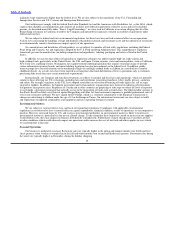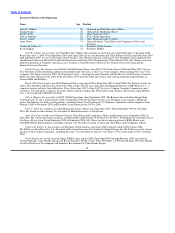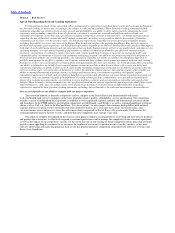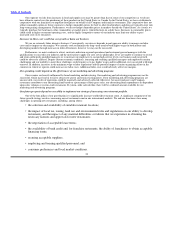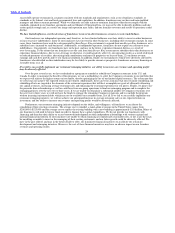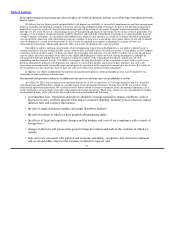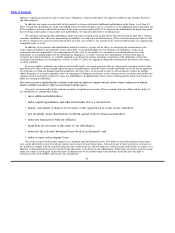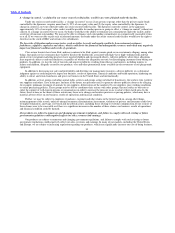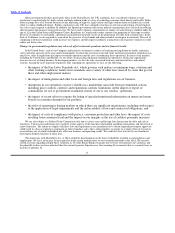Burger King 2010 Annual Report Download - page 27
Download and view the complete annual report
Please find page 27 of the 2010 Burger King annual report below. You can navigate through the pages in the report by either clicking on the pages listed below, or by using the keyword search tool below to find specific information within the annual report.
Table of Contents
Our portfolio management program may adversely affect our results of operations and may not yield the long−term financial results
that we expect.
We believe that our future growth and profitability will depend on our ability to successfully implement our portfolio management
program, including refranchising Company restaurants and closing underperforming restaurants. As part of our portfolio management
program we expect to accelerate the pace of refranchisings and sell up to half of our current Company restaurant portfolio within the
next three to five years. However, refranchisings may have unexpected and negative short term effects on our results of operations. For
example, (i) our Company restaurant margins could be adversely affected if the refranchised restaurants were more profitable than our
average Company restaurant, (ii) our general and administrative expenses may increase as a result of severance and other termination
costs incurred in connection with refranchisings and may continue to increase as a percentage of revenues unless we are able to identify
costs to eliminate as a result of the transaction, or (iii) we may be required to recognize accounting or tax gains or losses on
refranchising transactions, which could adversely affect our results of operations for a specific period.
Our ability to achieve the long−term benefits of our refranchising transactions will depend on (i) our ability to identify new or
existing franchisees that are willing and able to pay commercially reasonable prices for such restaurants, (ii) our ability to sell Company
restaurants in those markets where we desire to reduce our geographic concentration, (iii) our ability to reduce our overhead and fixed
costs to reflect our lower restaurant count and (iv) the ability and willingness of these new and existing franchisees to remodel the
refranchised restaurants and develop new restaurants within the markets of the refranchised restaurants, and the pace of such
remodeling and development activity. Our ability to recognize the long term benefits of any acquisition we may make as part of our
portfolio management program will depend on our capacity to successfully identify acquisition targets, negotiate and close such
transactions on commercially reasonable terms and integrate the operations of the acquired restaurants into our system. If we and our
new franchisees are not successful, then we may not achieve the long−term financial results anticipated.
In addition, our ability to implement our portfolio management program in certain geographical areas may be limited by tax,
accounting or other regulatory considerations.
Our international operations subject us to additional risks and costs and may cause our profitability to decline.
As of June 30, 2010, our restaurants were operated, directly by us or by franchisees, in 76 foreign countries and U.S. territories
(including Guam and Puerto Rico, which are considered part of our international business). During fiscal 2010, our revenues from
international operations represented 38% of total revenues and we intend to continue expansion of our international operations. As a
result, our business is increasingly exposed to risks inherent in foreign operations. These risks, which can vary substantially by market,
are described in many of the risk factors discussed in the section and include the following:
• governmental laws, regulations and policies adopted to manage national economic conditions, such as
increases in taxes, austerity measures that impact consumer spending, monetary policies that may impact
inflation rates and currency fluctuations;
• the risk of single franchisee markets and single distributor markets;
• the risk of markets in which we have granted subfranchising rights;
• the effects of legal and regulatory changes and the burdens and costs of our compliance with a variety of
foreign laws;
• changes in the laws and policies that govern foreign investment and trade in the countries in which we
operate;
• risks and costs associated with political and economic instability, corruption, anti−American sentiment
and social and ethnic unrest in the countries in which we operate; and
25



